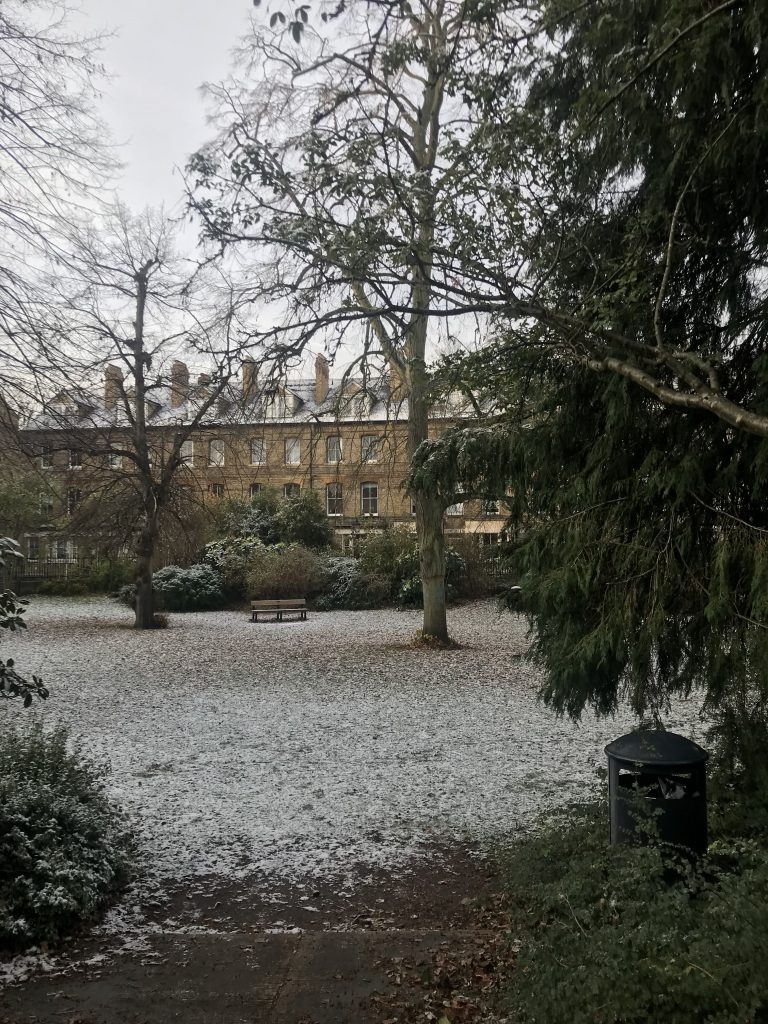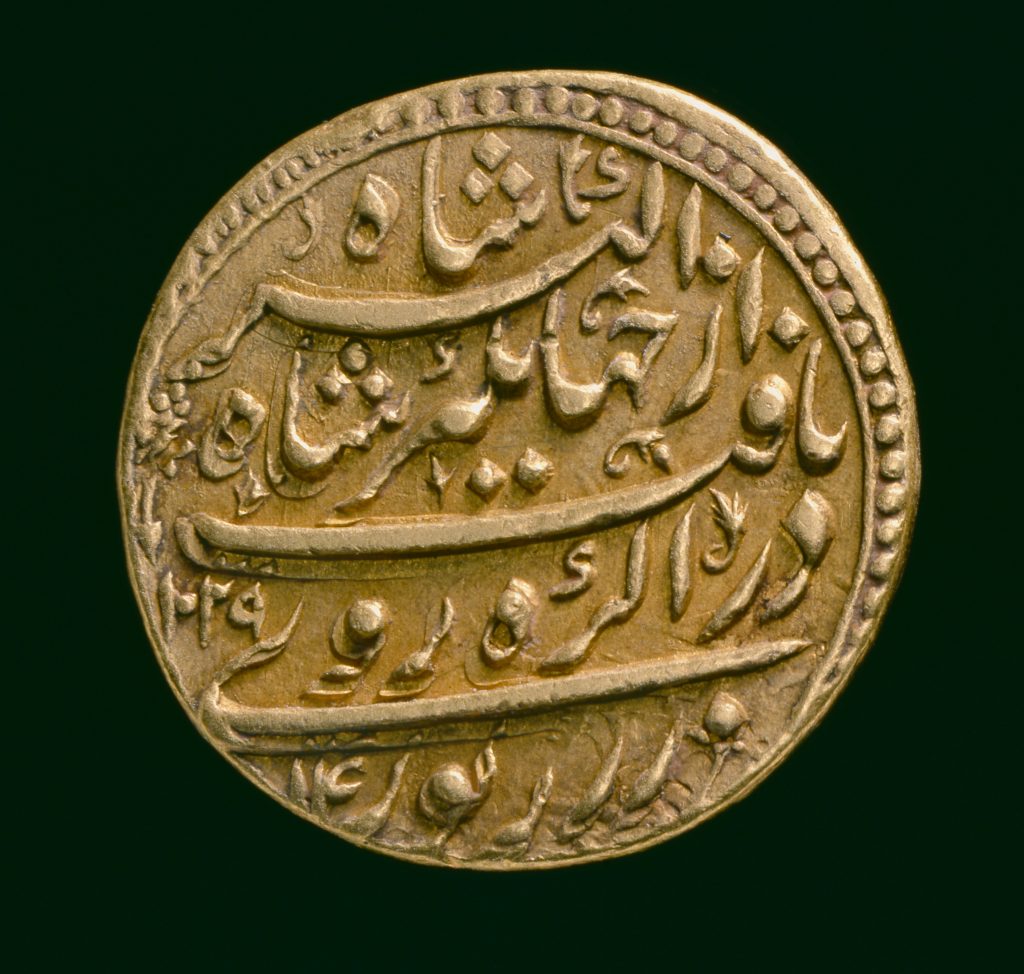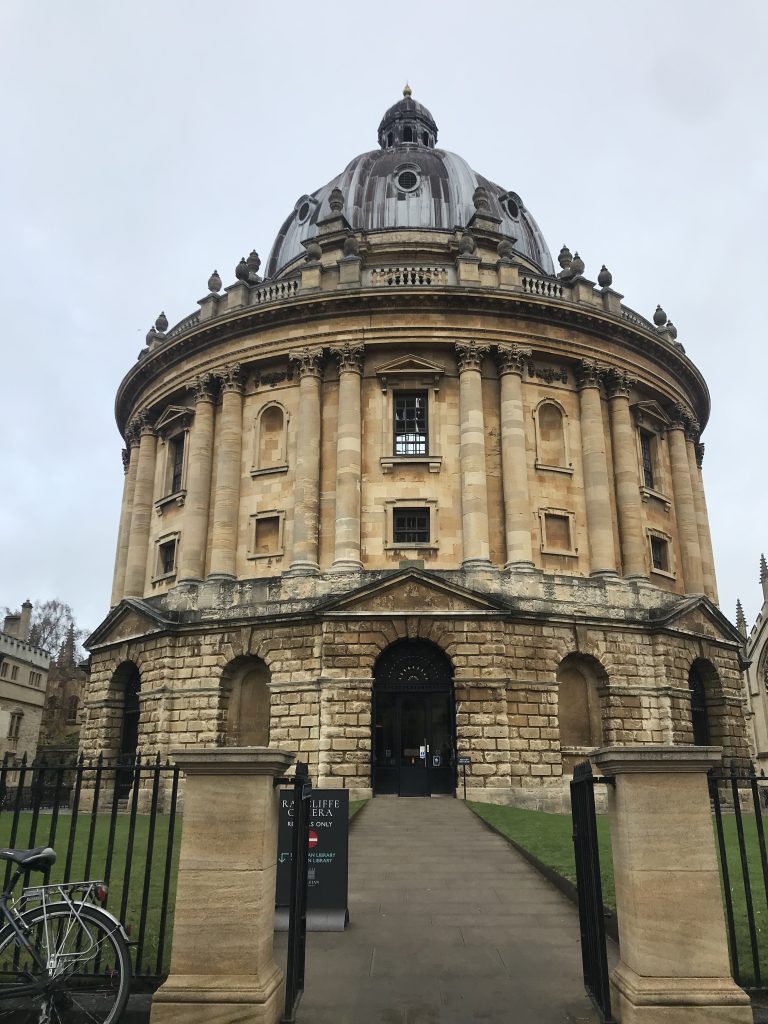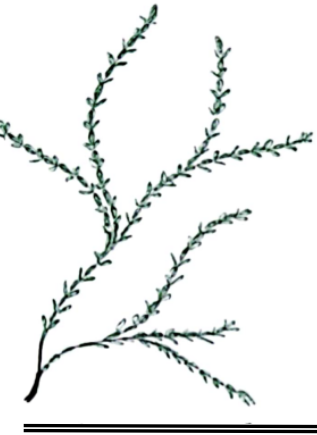My PhD project has been designed in collaboration with the Ashmolean Museum at Oxford. The museum has an extensive collection of South Asian coins, which are the core objects for my research. At the end of November 2021, I travelled to Oxford to examine the collections and visit the Ashmolean for the first time. In a fortunate coincidence, snow greeted me on my first day in Oxford. I tried to make the most of the chilly Sunday by exploring the city and keeping cosy with hot chocolate.

Food indulgences aside, I also took the time to visit the Oxford Museum of Natural History Museum as well as the Pitt Rivers Museum. Both were a treat, and I came across some interesting stories such as the history of the Museum of Natural History which was narrated in the museum’s panels. The Pitt Rivers was remarkable in the abundance of objects in their overflowing display cases. Contentious histories of their collections were however directly addressed such as in the chart showing the global spread of the human remains cared for by the museum. I also appreciated that the museum took active steps by making critical changes to its displays as part of its decolonisation process. Placed right at the outset, new text panels talked about how the museum is not a neutral space and addressed its complicated past.
In the Pitt Rivers Museum, an exhibition titled Beyond the Binary addressed ideas about the binaries we often classify people in. Designed in collaboration with over 40 communities, the exhibition displayed conventional museum collections in a new light, using the objects to narrate stories about LGBTQIA+ communities. For me, the highlight was the story of the Sikh princess, Catherine Hilda Duleep Singh. An active suffragette in London, she was the second daughter of the Sikh ruler Maharaja Duleep Singh. It was inspiring to hear about an Indian woman who campaigned for women’s rights in England. As a quote written by Shakira Morar said, “Throughout history queer women of colour are erased, omitted or forgotten”. The display, however, recounted Catherine’s relationship with her German governess, Lina Schafer, through objects and literary devices like poems.
In the next few days, I explored the coin collections at Ashmolean and met many of the wonderful staff that works at the museum. My supervisor, Dr Shailendra Bhandare walked me through the museum’s coin collections where I learnt about the coin cataloguing and classification practices of museums. Holding the coins in my hand was an exhilarating feeling. Coin collections, as he discussed with me, are stored in small cabinets which are made especially for this purpose. The coins are usually organised regnally, which means that the coins are arranged by the emperor who issued them, and then followed by the emperor who ruled after the former, so that Mughal emperor Akbar’s coins will be followed by the coins of his son Jahangir and so on. Within each emepror’s issues, the coins are placed according to the mint place in an alphabetical fashion so that within Akbar’s coins, mint towns with the letter A will be followed by the letter B and so on.

It was most exciting to be in the Heberden Coin Room at the museum which holds the coin collections of the Ashmolean. One can also use the room’s reference books to research and learn more about the objects. Dr Bhandare informed me of ticketing practices where coins are placed in their slots with tiny tickets. Each ticket lists the coins’ accession details and on occasion, might also include notes made by the original collector and scholar. Looking for similar tickets across various museums’ will be a useful way to trace the trajectories of the coins and thus find their collecting histories.
On the next day, I also had the chance to meet some fellow students working on CDP PhD projects with various museums in Oxford at a lunch organised by the Gardens, Libraries, Archives and Museums (GLAM) team. It was wonderful to hear about their exciting research projects over lunch.
At the Ashmolean itself, I met Julian Baker, Curator of Medieval and Modern Coins, and Matthew Winterbottom, Curator of Sculpture and Decorative Arts, both of whom were kind enough to discuss my project with me. I had an interesting chat with Matthew about his Anglo-Indian heritage and Julian helped me navigate the coin room’s records system. My supervisor also introduced me to the director of the Ashmolean Museum, Dr Alexander Sturgis. I was honoured to meet him in person, and he was very supportive of my project.
The next day, my supervisor organised a coin handling workshop where he spoke about various types of ancient coins, their history and interesting iconographies. Discussing these stories with the students made for an enriching afternoon where I learnt about the value of coins as a source for constructing the history of India.

In the evening we visited the Sackler library, where Dr Bhandare walked me through some useful references for the field of numismatics held in the library. We examined the Proceedings for the Numismatic Society of India as well as the Numismatic Supplement to the Journal of the Royal Asiatic Society of Bengal. My supervisor gave me useful tips on how to use these texts for tracing the Indian collectors for my research.
During the trip, I also got the chance to visit the History Faculty Library at the Radcliffe Camera and the Bodleian Libraries. Truly majestic buildings, both hold a wealth of useful texts on many subjects including archaeology and history which are valuable for research.

Overall, the visit to the Ashmolean and Oxford was an educative one. I familiarised myself with the coin collections and got the exciting chance to hold these objects in my hand. I met some very helpful people and was able to discuss their projects as well as mine. I learned about cataloguing and classifying practices from my supervisor, all of which will form a crucial part of my research methodology. The wealth of resources that Oxford, especially its museums and libraries, offers will certainly keep calling me back to the city.
